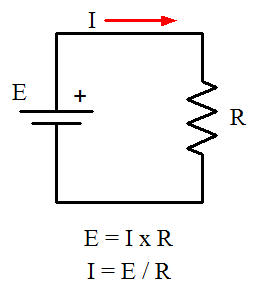


Experiments with magnets and our surroundings
Twelve Fundamentals of Magnetism
1. Conventions used for currents and fields
You may wonder why we should start with such a basic topic. The reason is that there are a number of differences in the conventions that engineers and scientists and others use. Without being aware of these differences, things become very confusing and, I suspect, many give up on this subject.
A qualitative understanding of magnetics include the following ten statements:
1. North magnetic poles point north, south
magnetic poles point south.
2. Like poles repel, unlike poles attract.
3. Magnetic forces attract only magnetic materials.
a. Magnetic materials include the
elements iron, nickel, cobalt.
4. Magnetic forces act at a distance.
5. While magnetized, temporary magnets (a piece of iron) act
like permanent magnets.
6. A coil of wire with an electric current flowing through it
becomes an electromagnet.
7. Putting iron inside a current-carrying coil increases the
strength of the electromagnet.
8. A changing magnetic field induces an electric current in a
conductor.
a. The best electrical conductors are
silver, copper, gold, aluminum (in that order).
9. A charged particle experiences no force when moving
parallel to a magnetic field, but when it is moving perpendicular to the field
it experiences a force perpendicular to both the field and the direction of
motion.
10. A current-carrying wire in a perpendicular magnetic field
experiences a force in a direction perpendicular to both the wire and the field.
The first four statements help to explain how a compass works,
but in order to understand a much larger group of phenomena using electromagnets
such as motors, generators, transformers, door bells, speakers, headphones and
actuators, we need a quantitative understanding that covers the other six
statements.
a. Links for this topic
http://en.wikipedia.org/wiki/Magnetism
http://en.wikipedia.org/wiki/Electric_current
http://en.wikipedia.org/wiki/Lines_of_force
http://en.wikipedia.org/wiki/Field_line
b. Current flow
We say that conventional current flows from the + end of a battery to the - end. This is, of course, opposite to the electron flow, but was adopted as a result of Benjamin Franklin's experiments. Some textbooks talk about electron flow that is from the - end of a battery to the + end. This can be very confusing when looking at diagrams in that book since they then talk about left-hand rules instead of right-hand rules, and other things. On this web site, and in most college textbooks, conventional current is used where an arrow shows the current flow from + to -. Check the preface of a textbook you may be reading, to see what conventions the author is using. I've not purchased some books if they have a different convention than what is presented here.

c. Current into and out-of a cross-sectional view of a wire
In order to indicate the direction of current flow, when looking at a cross section of a wire, a "cross" (or "X") and a "dot" are used. A "cross" indicates the current is going into the page, as though you were watching the fletching (feathers) of an arrow as it travels away from you. A "dot" indicates the current is coming out of the page, as though you were watching the point of an arrow as it comes toward you! (Be sure to duck!)
d. Magnetic flux flow
We say that magnetic lines of flux flow from the North pole to the South pole outside of a magnet. Inside the magnet, the magnetic lines flow from the South pole where they entered the magnet, to the North pole where they will exit the magnet. This is simply a convention with which engineers have agreed upon. There isn't something physical that determines this, as is the case where electrons physically move from the - end of a battery to the + end of a battery. However, one needs to be consistent in order to determine how devices using magnetic fields will behave. The Right-Hand-Rule and Left-Hand-Rule only works when currents and fields are going in the directions we have predefined.
There are some who like to think of the magnetic field as flowing from a positive source to a negative source. This is an incorrect view of how magnetic fields behave. Thinking of a positive end or negative end of a magnet isn't horrible, but why not use the standards that the magnet manufacturers use? Others say that the end of the magnet that points toward the north pole of the earth (in the Arctic), is really a South magnetic pole (saying there is a North magnetic pole located in the Arctic). When these basic conventions are swapped around, we cannot fully understand what one is trying to do without a special dictionary to translate their personal conventions into the normally accepted conventions.
e. Magnetic field lines
Magnetic field lines seen in drawings or computer plots are an aid to visualize the magnetic field. They are not real but are very useful! When using magnetic field lines, note that they are closed paths, like rubber-bands laid out. They don't cross each other, nor do they start at some point and end at another point. Each one always loops back onto itself.We have these six basic rules for magnetic field lines:
i) Magnetic field lines are continuous and will always form closed loops.
ii) Magnetic field lines will never cross one another.
iii) Parallel magnetic field lines traveling in the same direction repel one another. Parallel magnetic field lines traveling in opposite directions tend to unite with each other and form into single lines traveling in a direction determined by the magnetic poles creating the field lines.
iv) Magnetic field lines tend to shorten themselves. Therefore, the magnetic field lines existing between two unlike poles cause the poles to be pulled together.
v) Magnetic field lines pass through all materials, both magnetic and nonmagnetic. Type I superconductors would be an exception to this.
vi) Magnetic field lines always enter or leave a magnetic material at right angles to the surface.